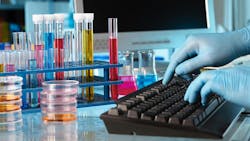Water management in pharma: Ensuring purity and compliance in pharmaceutical manufacturing
Keeping water clean is critical in any sector. However, pharmaceutical manufacturers must meet higher standards than most. Even though the municipal sources pharma companies rely on already purify their water, additional sanitation and testing is often necessary.
Regulatory requirements for pharmaceutical water
While potable water may be safe to drink, it isn’t safe for all pharmaceutical applications. The Food and Drug Administration (FDA) forbids potable water in dosage form drugs and lab testing solutions. Any water used in these products must meet higher standards as outlined by the U.S. Pharmacopeial Convention (USP).
The USP doesn’t outline microbial limits, saying these may vary between use cases and that facilities should implement their own house standards. However, it does provide specific requirements for other purity factors. For example, pharmaceutical water cannot contain more than 500 micrograms of activated carbon per liter.
Pharma companies and their water suppliers should also recognize that USP standards can change. The organization used to require testing to ensure pH levels between 5.0 and 7.0 but now uses a conductivity test instead.
How to ensure water purity and compliance
Given these high and developing standards, pharmaceutical manufacturers must implement several purification and verification steps. Specifics may vary between products, but a few best practices apply to all pharma water applications.
Understand applicable standards
The first step is to recognize what the law requires for the specific use case at hand. FDA standards for pharmaceutical water fall into eight categories of increasing stringency. Water used to manufacture bulk drugs does not need the same purity levels as that going into injections.
Similarly, regulations vary by location. Pharma companies selling products in Europe must comply with the European Pharmacopeia guidelines, which categorize water into three levels of purity, not eight. Any effective testing and purification methods require a thorough understanding of these requirements to be reliable.
Use the right filtering and purification methods
Once pharma manufacturers know their applicable standards, they can determine the optimal filtering method. In general, the more contaminants a filtration system removes, the better, but organizations should consider a few other factors, too.
Reverse osmosis can remove over 95% of metal contaminants but may not achieve the required conductivity levels. Activated carbon is effective at purifying water from organic compounds, but manufacturers must remove much of it from their water after this filtration.
Which solution is best depends on the kinds of impurities needing removal, acceptable levels of contaminants and any downstream processing requirements. Facilities should also consider their budgets and ability to maintain complex machinery.
Ensure easier cleaning and sanitation
It’s also important to ensure any equipment the water touches is easy to clean and sanitize. Over time, even pristine working environments can amass contaminants as water flows through the system. Consequently, manufacturers must be able to clean their machinery with minimal disruption to prevent cross-contamination.
Material selection is a critical part of this process. Nonporous surfaces like 316-grade stainless steel enable better cleaning because contaminants are less likely to adhere to them. Some materials, such as silver and metal nanoparticles, even offer natural antimicrobial properties.
Sanitation workflows also play a role. Pharma companies should develop specific routines and standards for cleaning and disinfecting machinery their water passes through and train all relevant personnel accordingly.
Keep detailed records
As manufacturers work through these steps, they should record all the measures they take to ensure water purity. Complying with strict regulations often means providing evidence or performing the occasional audit. Consequently, the regulatory process will be much smoother if businesses maintain detailed records from the beginning.
Employees should test regulated water purity indicators before and after filtration. Additional testing to catch cross-contamination before using the water in any pharmaceutical products may also be necessary. In all cases, this data should go into a permanent log to maximize transparency and auditability.
Employ IoT monitoring
The monitoring and recording process can be time-consuming and prone to errors when done manually. Consequently, it’s often best to automate it through the Internet of Things (IoT).
IoT devices offer wireless access to real-time data. These sensors can continually record water purity levels and automatically upload them to the cloud to streamline and error-proof the process. Similar systems can also alert employees of maintenance concerns in filtration infrastructure to prevent breakdowns that may hinder water quality.
As pharma manufacturers implement IoT solutions, they should follow cybersecurity best practices like network segmentation and changing default passwords. Security officials have noticed attackers targeting IoT devices in water facilities, so thorough protection is essential.
Water purity and compliance are essential in pharma
Water purity may be important in all industries, but it’s a matter of public safety and legal compliance in pharmaceuticals. Drug manufacturers must understand the higher requirements they face and go beyond normal filtration and disinfection methods.
About the Author



